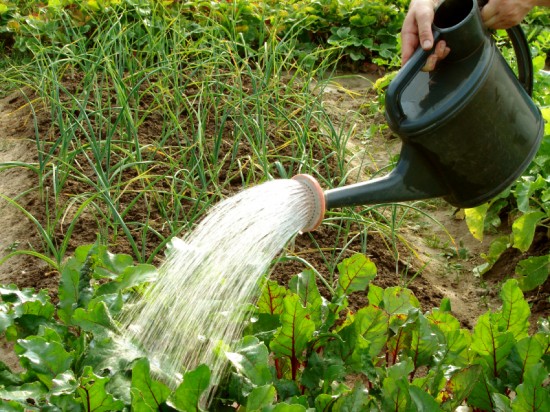You must know that if you water little and often, then all work will be in vain, as the water reaches the root system of the plant. The main number of the roots of vegetables is at a sufficient depth from the surface about 15-25 cm Such watering, allow to soak in a hot weather only the surface of the earth, can harm plants. Begin to grow lateral surface roots and deeper root growth stops. Roots grow curves is losing appeal.
How to understand that plants do not have enough moisture
It is necessary to evaluate the appearance, but remember that in hot weather the leaves in any case droop (even if the soil is well hydrated), because roots do not have time to supply water. You can try to roll up from the earth, taken from a depth of 15 cm, ball. Sandy soil requires moisture, if the ball do not work, light loamy – when the ball crumbles under the pressure of heavy loamy soil – if the ball cracks.
How much water is needed for different vegetables
At the time when the plant is vigorously growing green mass, it requires a large amount of moisture. It's the early to mid-summer. If the water is not enough, you will receive hands on some plants (radish, beet, turnip, radish, onion). If you have been admitted short-term drought, radishes will become bitter, hard and spoiled by pests. Leafy vegetables will also acquire a bitter taste and become tough. Cabbage is not fastened in the normal cabbages, tomatoes will fall off the flowers.
If the site has enough water for irrigation or hard to reach watering should be every plant by the roots into the hole. If during a drought under every Bush to pour a bucket of water and mound plants, then a week can not worry.
How to hose
Lay the hose between rows, which make the pre-grooves. After watering, a few hours later, it is necessary to aerate the ground. This will increase access of air to the roots and slow evaporation. Watering is better in the evening when there is no heat.
If there is no water
After every rain in the spring or infrequent watering need to loosen the soil. Loose layer of soil will protect the soil from drying too quickly, not allowing the moisture to evaporate.
